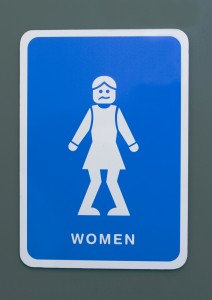By Choicesinchildbirth
It’s the elephant in the room: pregnancy-induced stress incontinence (SI).
Did you know that 1 in 3 new moms experience light bladder leaks for at least 5 years after giving birth? Stress incontinence refers to the accidental loss of urine during physical stress such as laughing, sneezing, or exercising. Many women experience stress incontinence during pregnancy, and the severity and duration can vary greatly.
So will it happen to you?
The incidence of SI is low in the first trimester, rising rapidly in the second trimester and continuing to increase, albeit more slowly, throughout the third trimester. Age and body mass index are important factors; women who are older or heavier are more likely to experience leaks. And for some women, pregnancy may be relatively leak-free but delivery leaves them with postpartum SI issues.
Many women experience the worst leaks for the first few days after delivery, even following a cesarean section. Things generally improve within 7-10 days of giving birth, but for other new moms, SI will continue to be an issue for several months or years after the pregnancy. All of this means that hitting the gym post-baby can be literally stressful.
Bladder issues during and after pregnancy can have several causes, the most obvious being increased pressure on the bladder. Pregnancy can also damage the nerves that control the bladder, and the bladder and urethra are prone to shift during pregnancy. Additionally, when an episiotomy is performed during delivery, many women experience post-baby bladder leakage issues.
A number of strategies can be used to mitigate the problem. The first recommendation is Kegel exercises. While Kegels can be a powerful method for improving bladder control, it’s important to be aware of the many misconceptions surrounding them. This article (insert link: https://acnm-midwives.blogspot.com/2010/12/do-you-really-know-kegels.html) on Midwife Connection does a fabulous job of dispelling the myths.
Kegels alone cannot always correct the problem. Some women find vaginal weights to be an effective way of strengthening the pelvic floor muscles. They are available in a range of sizes, so you can work your way up to heavier weights as you improve muscle strength and control.
If these at-home methods don’t work, seek out a physical therapist who specializes in women’s health and the pelvic floor. They have got a range of tools, including biofeedback, which is especially useful for gauging muscle control. Physical therapy, including pelvic muscle exercise, has been consistently shown to resolve or improve SI.
If the problem persists, your therapist will be able to recommend appropriate treatments, including medicine or surgery. Above all, know that there are solutions! While pregnancy-induced incontinence is very common, it does not need to be taken as a normal part of childbirth to be borne in silence. If incontinence affects your quality of life, it can and should be corrected.
Julie Sygiel is founder and CEO of Dear Kate, a line of leak-free lingerie for women with a built-in breathable liner.






